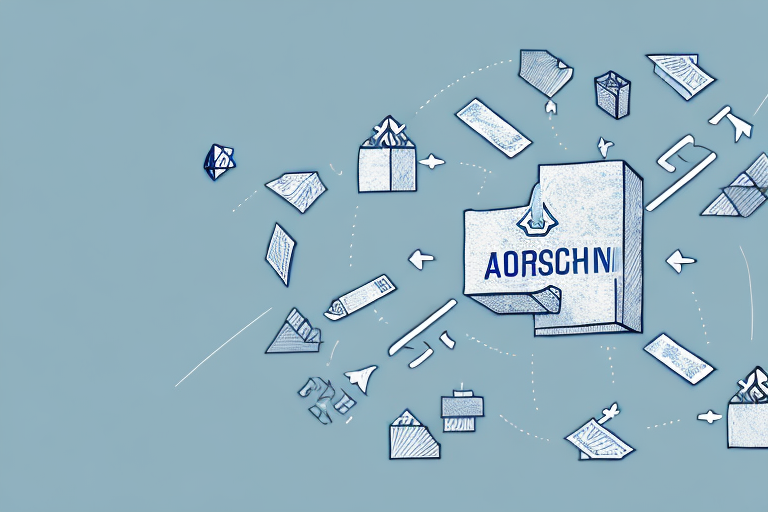Understanding Concealed Damage Coverage in the Supply Chain
In the world of supply chain management, concealed damage is a common concern for both shippers and carriers. Concealed damage refers to damages that are not apparent at the time of delivery and are hidden from plain sight. These damages can arise due to improper handling, packaging, and loading during transit.
What is Concealed Damage in the Supply Chain?
Concealed damage is any damage to products during transport that is not apparent at the time of delivery. This can occur due to various factors, such as improper packaging, mishandling, or freight consolidation. Concealed damage can manifest in many forms, including:
- Crushed or damaged packaging
- Dented or bent items
- Abrasions or scratches
These damages can occur even if the outer packaging appears to be undamaged, making it crucial to thoroughly inspect the contents of a shipment upon receipt.
Concealed damage can have significant consequences for businesses in the supply chain. It can result in increased costs due to the need to replace damaged products, delays in delivery, and damage to the reputation of the business. Additionally, it can lead to legal disputes between the parties involved in the supply chain, such as the shipper, carrier, and receiver.
To prevent concealed damage, businesses can take several measures, including:
- Using appropriate packaging materials
- Ensuring proper handling and loading of products
- Conducting regular inspections of shipments
- Maintaining clear communication and documentation between all parties involved
The Importance of Concealed Damage Coverage
Concealed damage in the supply chain can significantly impact both the shipper and the carrier. It can lead to unhappy customers, increased costs, and the loss of valuable business relationships. For this reason, many carriers offer concealed damage coverage as part of their shipping services.
This coverage ensures that shippers receive compensation for any damages that are not evident at the time of delivery, protecting them from financial losses. In addition to financial protection, concealed damage coverage can help foster a positive relationship between shippers and carriers by demonstrating the carrier’s commitment to delivering goods safely.
It is essential for shippers to understand the terms and conditions of concealed damage coverage before selecting a carrier. Some carriers may have limitations on the types of damages covered or the amount of compensation provided. Shippers should also be aware of the claims process and any deadlines for filing a claim. By being informed and proactive, shippers can ensure adequate protection and minimize the impact of concealed damage on their business.
Types of Concealed Damage Coverage
There are several types of concealed damage coverage available in the supply chain industry:
- Specific Commodity Coverage: Provides coverage for specific items, such as high-value electronics.
- Declared Value Coverage: Allows shippers to choose a specific value for their shipment, determining the carrier's maximum liability in case of damage.
- Broad Form Coverage: Comprehensive coverage that protects against a wide range of risks, including theft, accidents, and natural disasters.
When selecting concealed damage coverage, shippers should consider the following:
- The nature and value of the items being shipped
- The carrier's liability limits
- Whether additional coverage is necessary to fully protect the shipment
Careful evaluation of these factors helps ensure that shipments are adequately protected against unexpected damage or loss.
How to Determine if Your Shipment Has Concealed Damage
The key to mitigating further damage from concealed damage is early detection. When receiving a shipment:
- Carefully inspect all outer packaging for signs of damage, such as tears, punctures, or dents.
- Check for discrepancies between the shipment's size or weight and the shipping documents.
- Document any signs of damage on the delivery receipt and inform the carrier immediately.
- Thoroughly inspect the contents of the shipment for any concealed damage, such as broken or bent items, leaking fluids, or unusual odors.
Taking photos of any damage can be helpful when filing a claim with the carrier or insurance company.
If concealed damage is discovered, act quickly by contacting the carrier or shipping company to report the damage and file a claim. Provide all necessary documentation, including photos and the delivery receipt, and retain all damaged items and packaging materials until the claim is resolved.
Best Practices to Prevent Concealed Damage in the Supply Chain
While concealed damage coverage provides financial protection, the best way to avoid financial losses is to prevent concealed damage from occurring. Implement the following best practices:
- Ensure all products are packaged appropriately and labeled with proper handling instructions.
- Develop specific handling procedures in collaboration with carriers to minimize damage risks during transport.
- Maintain open communication with carriers throughout the transportation process to address potential issues promptly.
- Conduct regular inspections of packaging materials and transportation equipment to identify and address potential weaknesses.
- Train all personnel involved in the transportation process on proper handling techniques and procedures.
By adopting these practices, shippers can significantly reduce the likelihood of concealed damage and ensure that products arrive at their destinations in good condition.
How to File a Claim for Concealed Damage
If you suspect your shipment has been damaged during transport:
- Note any damage on the delivery receipt.
- Contact the carrier immediately to report the damage.
- Provide necessary documentation, such as photos of the damage and proof of the shipment’s value.
- Respond promptly to any inquiries from the carrier.
- Keep all original documentation related to the shipment, including packing slips, delivery receipts, and inspection reports.
Common Mistakes to Avoid When Filing a Claim for Concealed Damage
Filing a claim for concealed damage can be complex, but avoiding common mistakes can streamline the process:
- Failing to Inspect: Ensure you thoroughly inspect the shipment for concealed damages at the time of delivery.
- Incomplete Documentation: Provide accurate and complete information to support your claim. Incomplete or inaccurate details can delay processing or lead to denial.
- Ignoring Deadlines: Be aware of any deadlines for filing claims and adhere to them to avoid forfeiting your right to compensation.
What Happens After You File a Claim for Concealed Damage?
After filing a claim for concealed damage, the carrier will initiate an investigation to determine the claim's validity. This process may involve:
- Reviewing the provided documentation
- Requesting additional information or interviews with involved parties
- Assessing the claim based on coverage terms and carrier liability
Depending on the investigation's outcome, the carrier may offer a settlement or deny the claim. Maintaining clear and prompt communication with the carrier can facilitate a smoother resolution.
The Role of Insurance in Protecting Against Concealed Damage in the Supply Chain
In addition to concealed damage coverage, many shippers purchase cargo insurance to protect their valuable products during transport. Cargo insurance provides protection against loss or damage to cargo, including concealed damage, from the time it leaves the port of origin to its final destination.
When opting for cargo insurance:
- Work with a reputable insurance provider.
- Ensure all necessary documentation is provided to secure adequate coverage.
How Carriers Evaluate and Process Claims for Concealed Damage
When carriers receive a claim for concealed damage, they evaluate it based on several factors:
- Documentation provided
- Value of the shipment
- Terms of the coverage
Carriers may request additional documentation or conduct interviews with involved parties to investigate the claim's validity. A clear claims process and transparent communication are essential for a smooth and efficient resolution.
The Future of Concealed Damage Coverage in the Supply Chain Industry
As the demand for faster and more efficient transportation grows, the supply chain industry will continue to face challenges in preventing concealed damage. Consequently, the importance of concealed damage coverage will increase in protecting businesses and consumers from financial losses.
Future developments may include:
- New technologies and procedures to mitigate concealed damage risks
- Enhanced training programs for personnel involved in transportation
- Improved communication and documentation practices among supply chain partners
Shippers must stay informed of the latest industry developments to ensure they are adequately protected against concealed damage.
In conclusion, concealed damage coverage is a crucial aspect of the supply chain industry that helps protect shippers and carriers from the financial consequences of hidden damages. By understanding the types of coverage available and implementing best practices to prevent concealed damage, shippers can minimize the risk of damage during transport. In the event that concealed damage does occur, prompt and thorough documentation is key to filing a successful claim. As the industry continues to evolve, both carriers and shippers must stay informed and collaborate to protect their valuable products and maintain professional relationships.






















